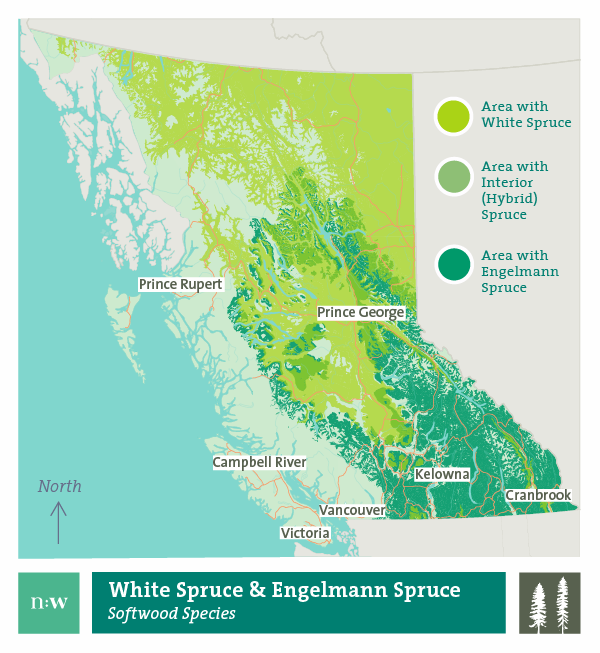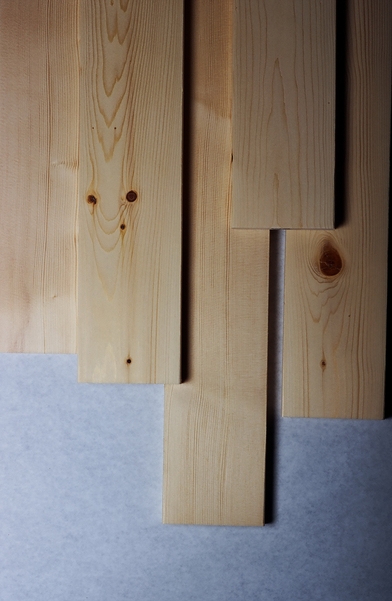Common uses and applications
White spruce and Engelmann spruce are part of the SPF (spruce-pine-fir) species group along with lodgepole pine and subalpine fir. Kiln-dried SPF lumber is used as a structural framing material in all types of residential, commercial, industrial and agricultural building applications. It is used exclusively in the manufacture of prefabricated housing, trusses and other structural components.
White spruce is extremely versatile as dimension lumber because of its high strength-to-weight ratio. It is used to make softwood plywood, medium-density fibreboard (MDF), paperboard and felt. It is also used in building construction (framing, sheathing, roofing, sub-flooring), general millwork, interior finishing, boxes and packing cases. Its dimensional stability and superior gluing properties make it popular in the prefabrication industry. As a premier pulpwood, the species is used in the manufacture of newsprint and bleached Kraft pulps.
White spruce and Engelmann spruce are a good choice for a number of specialty products. White spruce is used for sounding boards in musical instruments, paddles and oars, cooperage, organ pipes, shelving and ladder rails. It is good for food containers because it is almost colourless and odourless when dried. Engelmann spruce wood is used to produce violins, pianos and aircraft parts.
Indigenous Peoples use peeled, split and soaked spruce roots to sew the seams of bark baskets and some use them to make tightly woven coiled baskets. Sheets of spruce bark are good for making cooking baskets and canoes, and some Indigenous communities use bark for roofing and baby carriers. White spruce saplings are used for snowshoe frames and bows, and the gum is heated to make a glue to fasten skins to bows and arrowheads to shafts. Decayed wood is used to tan hides.
Photo credit: Michael Bednar






